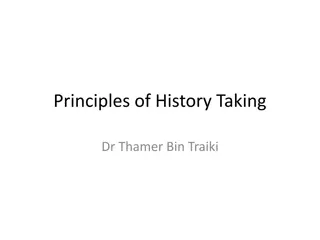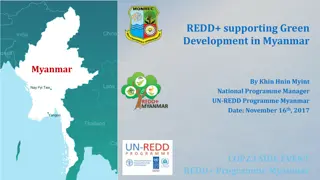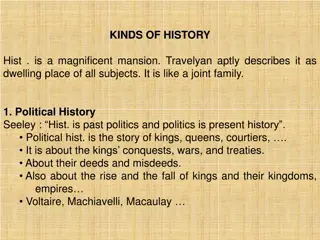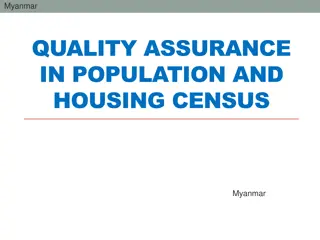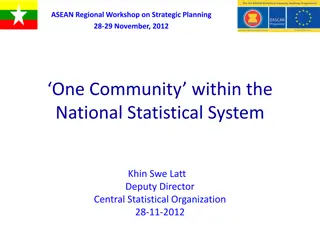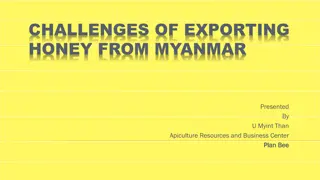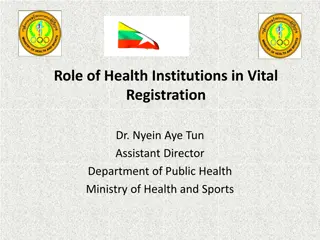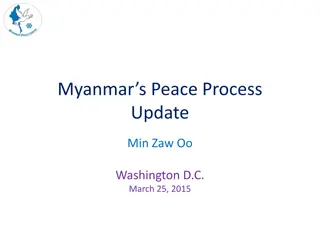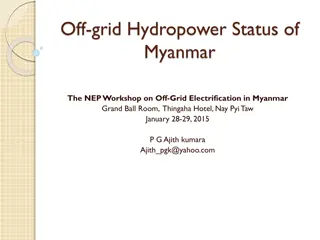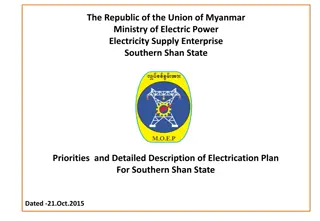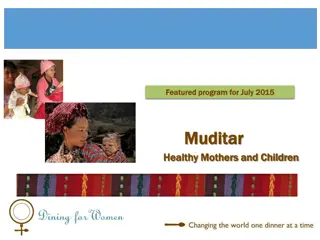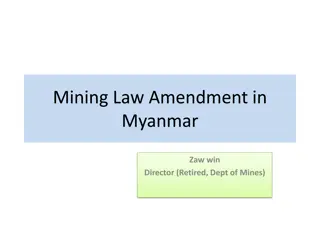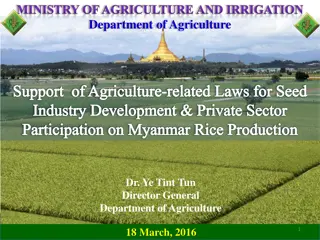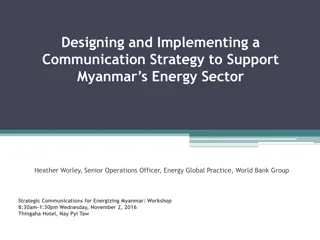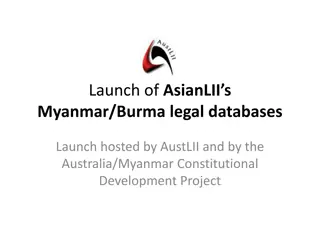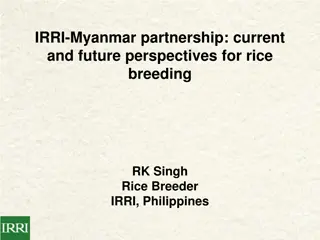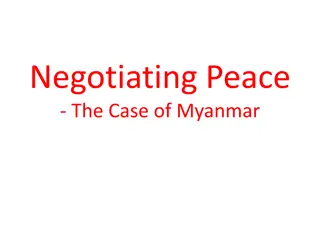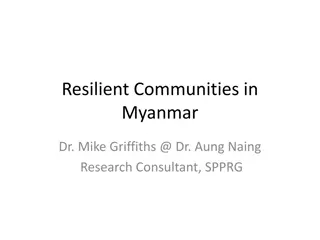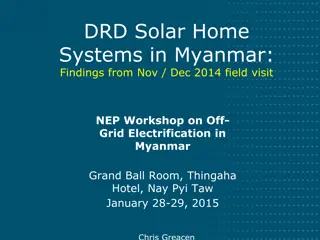History and Development of Myanmar
Explore the history and development of Myanmar through key events such as gaining independence from British rule, military coups, establishment of a single-party state, citizenship laws affecting ethnic groups, anti-government protests, and international trade relations with China. Learn about significant figures like U Nu and General Ne Win, as well as organizations such as the State Law and Order Restoration Council (SLORC) and the National Democratic Front. The timeline covers crucial milestones from 1948 to 1988, shedding light on Myanmar's political landscape and societal challenges.
Download Presentation

Please find below an Image/Link to download the presentation.
The content on the website is provided AS IS for your information and personal use only. It may not be sold, licensed, or shared on other websites without obtaining consent from the author.If you encounter any issues during the download, it is possible that the publisher has removed the file from their server.
You are allowed to download the files provided on this website for personal or commercial use, subject to the condition that they are used lawfully. All files are the property of their respective owners.
The content on the website is provided AS IS for your information and personal use only. It may not be sold, licensed, or shared on other websites without obtaining consent from the author.
E N D
Presentation Transcript
: \
: ( , World Peace Index, etc) (Conflict Barometer)
: ABC Onion SIDA DFID
: (timeline). BBC versus IRIN IRIN 1948: Burma gains independence from British rule. Anti-Fascist People s Freedom League (AFPFL) leader U Nu becomes the first prime minister. BBC 1948 - Burma becomes independent with U Nu as prime minister. Mid-1950s - U Nu, together with Indian Prime Minister Nehru, Indonesian President Sukarno, Yugoslav President Tito and Egyptian President Nasser co-found the Movement of Non- Aligned States. 1958-60: A military-led caretaker government is formed with General Ne Win as head. 1962: A government lead by U Nu, who won elections two years previously, is ousted in a military coup lead by General Ne Win. A single-party state with the Socialist Programme Party is established. 1958-60 - Caretaker government, led by army Chief of Staff General Ne Win, formed following a split in the ruling AFPFL party. 1960 - U Nu's party faction wins decisive victory in elections, but his promotion of Buddhism as the state religion and his tolerance of separatism angers the military. 1974: A new constitution that transfers power from the military to a People s Assembly, led by Ne Win and other former military leaders, is drawn up. 1962 - U Nu's faction ousted in military coup led by Gen Ne Win, who abolishes the federal system and inaugurates "the Burmese Way to Socialism" - nationalising the economy, forming a single- party state with the Socialist Programme Party as the sole political party, and banning independent newspapers. 1982: The Burmese Citizenship Law is adopted, stating that anyone who arrived after 1823 is not considered a citizen. This law isolates ethnic groups such as the Kachin, Karen, Chin and Rohyinga as associate citizens denied the rights/relief offered to full citizens, including the right to serve in public office. 1974 - New constitution comes into effect, transferring power from the armed forces to a People's Assembly headed by Ne Win and other former military leaders; body of former United Nations secretary-general U Thant returned to Burma for burial. 1988: Around 3,000 people are killed in anti-government protests. The State Law and Order Restoration Council (SLORC) is formed with the mission to eliminate all forms of internal dissent or rebellion 1975 - Opposition National Democratic Front formed by regionally-based minority groups, who mounted guerrilla insurgencies. 1988: Border trade between China and Myanmar officially opened.
: SIDA (The Swedish International Development Cooperation Agency) 1. , 1. 2. \- 2. \ 3. 3. (dividers and connectors) 4.


